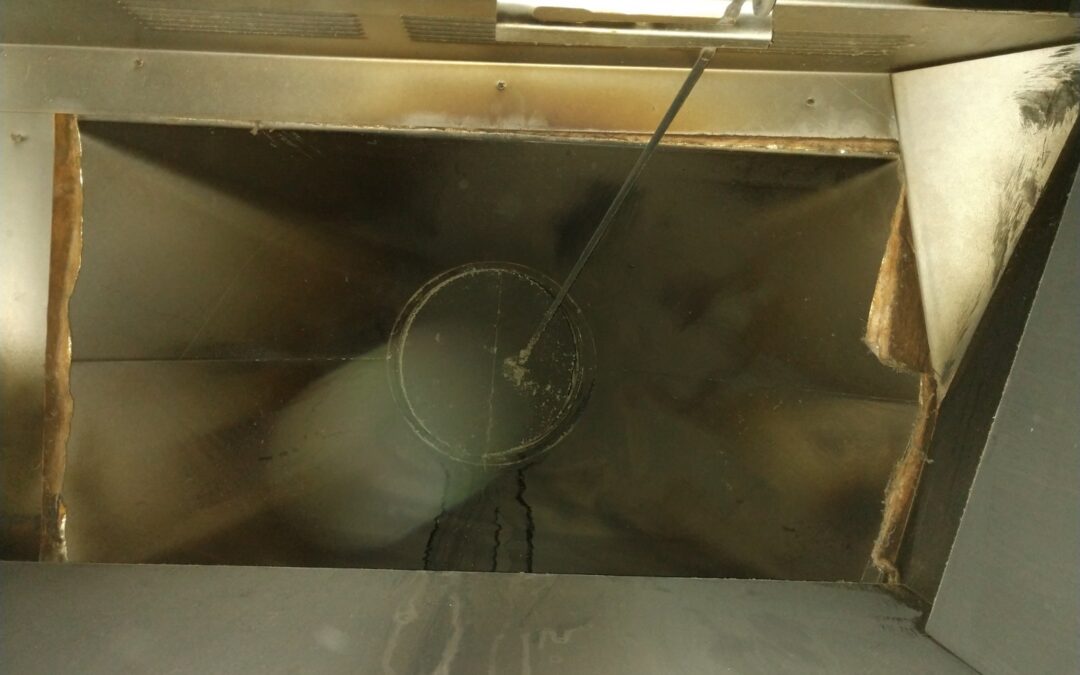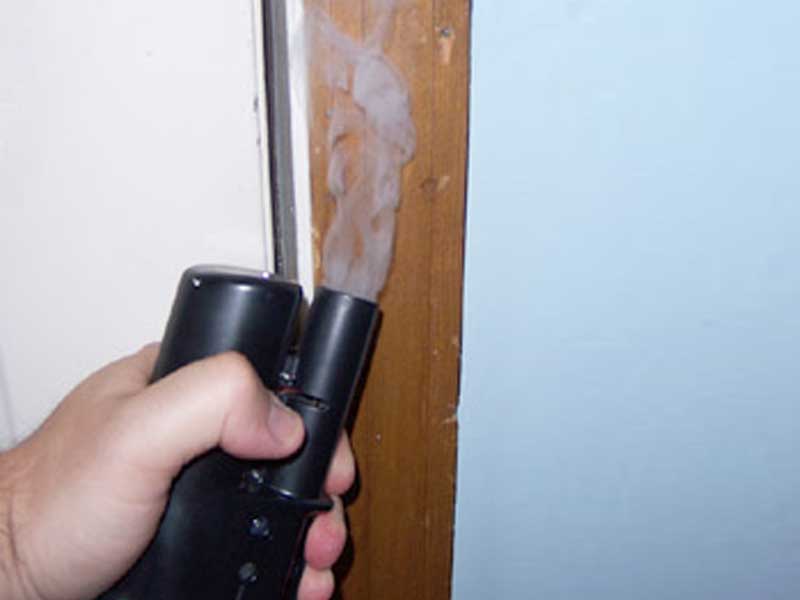


Show me how to use a chimney plug in my chimney, if my fireplace flue has 4 slanted walls?
How to use a chimney plug in my chimney, if my fireplace flue has 4 slanted walls? Does a Chimney Balloon really work in this fireplace, or should I make a DIY chimney plug?
Q: I am trying to use a chimney plug to seal an 11 inch diameter circle damper situation with the rod handle, as you can see in the picture. My goal is to primarily seal the flue from insects and pests and second reason is energy efficiency.
Would you please let me know how to use a chimney plug in my chimney, and which chimney plug and size is best for my damper handle situation. Thanks! – Ibrahim
A: Hi Ibrahim, I would recommend you use the 12″ round Flueblocker above the flue damper. That will work better than a Chimney Balloon in this fireplace. In order to install it, you will tuck the wool pad past the open damper without the handle attached. Then spear the Flueblocker handle into the wool pad clamp and tighten the handle by turning it to thread it into the hole on the clamp. One it is threaded you can use the leverage of the Flueblocker handle to push the wool pad into place above the chimney damper. It will look like the photo below. It will do a great job stopping bugs and drafts. – Jason R

Flueblocker installed above the damper
Contact us if you are wondering how to use a inflatable chimney plug or wool fireplace plug as a chimney draught stopper in my chimney?

Checking around doors for positive and negative airflow with a Smoke Pencil
How to check for positive or negative air flow around doors with a Smoke Pencil?
There are many hospitals that use the Smoke Pencil to check for positive or negative airflow around doors and ventilation registers to ensure that certain rooms in the hospital are not leaking air into other rooms.
Currently we are in the midst of a Corona Virus (COVID-19) outbreak in the United States. Hospitals are working feverishly to ensure their clean rooms, operating rooms, labs, quarantine rooms, waiting rooms, etc… are all separated effectively. This means the air in one room is not exchanging with the air in adjoining rooms.
Hospital maintenance staff often use the Smoke Pencil to check the airflow around door seals and vents to make sure the airflow is going in the correct direction and ventilation is operating properly. One advantage to using the Smoke Pencil is its vapor is a simple food grade mixture of Glycerin, Propylene Glycol, and water. This is much cleaner than using a smoke emitter to check airflow.

How to stop the smell from a top style damper with a wire down the chimney?
Q: Jason, I have a top style damper with a wire that comes down into the fireplace to pull tight. When I install a chimney pillow, should I open the top damper? I know doing this will allow the pillow to seal better at the location where the wire comes down, but I don’t know if it is ok to leave the top damper open. I have a terrible smell that I am trying to seal off and hope the pillow will help solve this. Also, I have an ash pit opening on the bottom of the fireplace – should I seal this with a pillow as well? – MF
Q: Hi MF,
HI Mike,
Your application is exactly like an application I walked through for a customer in Rockford, IL and we got it resolved quite easily. I attached some pictures of the Rockford install for your reference.
The trouble you are running into is the top damper is bottling up the chimney at the top, so when the cold air conducts through the chimney bricks the cooler creosote-laced air in the chimney has no place to go but come down into the house. Often the negative pressure in the house that the HVAC introduces, coupled with the open portal between floors through the ash cleanout, will amplify the smell problem.
So here is how we fix it…. Install a Chimney Balloon just above your old low metal damper frame (top left photo). For now, install it with the Chimney Balloon top damper open so the cable is slack. This will allow your chimney to vent the smell out the top, but not let the smell in the house. For the ash cleanout, take the cover off the chute for the cleanout and measure the hole going down (bottom left photo). Most of the time it will be smaller than a 9×9, so you can just install a 9×9 upside down into that chute. This effectively stops the air exchange through the Chimney Balloon and the ash cleanout. After a few months, you can close the top damper after it has time to air out.
One side note though. Make sure your Chimney Balloon top has a built-in screen over it to keep squirrels and birds out? – Jason

I have no fireplace damper and I want to heat with ventless gas logs.
Q: I have an old house and for whatever reason, there is not a damper at all (never was) on the fireplace. I love vent-free logs and am planning on installing them in this fireplace. Do you make a product that I can use in lieu of having to have a damper installed in order to keep the heat from my vent free logs in the house? _ ET
A: ET, I’m sorry we do not have a heat-resistant version of the Chimney Balloon. Our product is actually designed to release if exposed to acute heat. I wish I could direct you to this issue, but your fireplace and mantel may not be well equipped to handle the heat spillage from a vent-less gas log. I wouldn’t want you to risk a fire from having heat spilling up across your lintel and mantel. You may want to think carefully if this is in fact how you would like to heat that room. – Jason